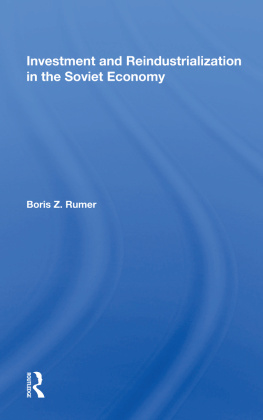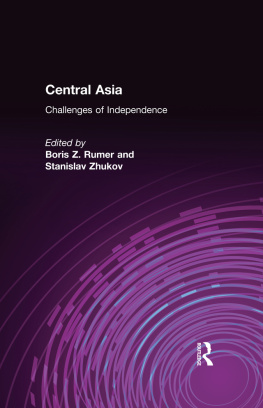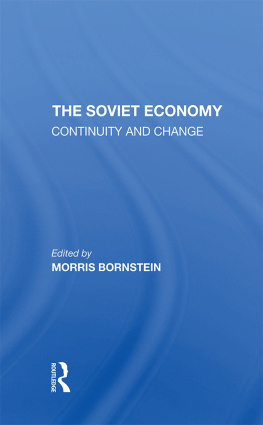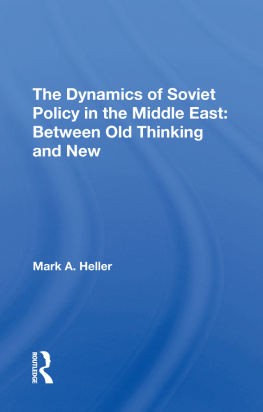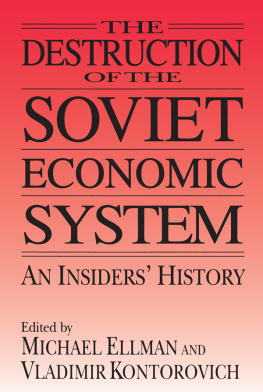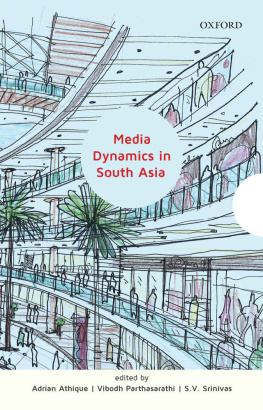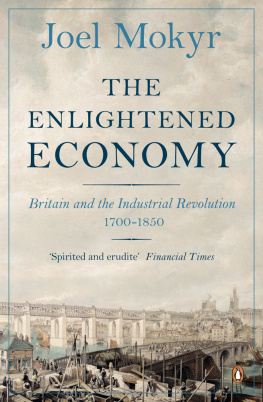Investment and Reindustrialization in the Soviet Economy
Westview Replica Editions
The concept of Westview Replica Editions is a response to the continuing crisis in academic and informational publishing. Library budgets for books have been severely curtailed. Ever larger portions of general library budgets are being diverted from the purchase of books and used for data banks, computers, micromedia, and other methods of information retrieval. Interlibrary loan structures further reduce the edition sizes required to satisfy the needs of the scholarly community. Economic pressures on the university presses and the few private scholarly publishing companies have severely limited the capacity of the industry to properly serve the academic and research communities. As a result, many manuscripts dealing with important subjects, often representing the highest level of scholarship, are no longer economically viable publishing projectsor, if accepted for publication, are typically subject to lead times ranging from one to three years.
Westview Replica Editions are our practical solution to the problem. We accept a manuscript in camera-ready form, typed according to our specifications, and move it immediately into the production process. As always, the selection criteria include the importance of the subject, the work's contribution to scholarship, and its insight, originality of thought, and excellence of exposition. The responsibility for editing and proofreading lies with the author or sponsoring institution. We prepare chapter headings and display pages, file for copyright, and obtain Library of Congress Cataloging in Publication Data. A detailed manual contains simple instructions for preparing the final typescript, and our editorial staff is always available to answer questions.
The end result is a book printed on acid-free paper and bound in sturdy library-quality soft covers. We manufacture these books ourselves using equipment that does not require a lengthy make-ready process and that allows us to publish first editions of 300 to 600 copies and to reprint even smaller quantities as needed. Thus, we can produce Replica Editions quickly and can keep even very specialized books in print as long as there is a demand for them.
About the Book and Author
Investment and Reindustrialization in the Soviet Economy
Boris Z. Rumer
Investment activity in the Soviet Union is presently undergoing a decline hitherto unknown in the history of the nation: The growth of capital investment has stopped, while levels of production have fallen. One important factor in this phenomenon is the Soviet policy of reindustrializationshifting new investments into the expansion and improvement of existing facilitieswhich severely limits capital available for new construction.
In this book, Dr. Rumer examines current Soviet investment policies and assesses their impact on economic development, especially in Siberia. Reindustrialization is intended to combine more rapid amortization for updating and retooling, growth in the volume of industrial output, and minimal capital investment. However, concludes Dr. Rumer, this investment pattern hinders the development of Siberia and thus reinforces the spatial polarization of fuel-energy and raw-material resources in the east of the country and the manufacturing industry in the west, with serious consequences for Soviet strategic/military vulnerability and for the Soviet economy.
Boris Rumer, previously head of the Department of Economics and Investment at the USSR Institute of Economics of the Construction Industry, is a research associate at the Russian Research Center, Harvard University.
To the memory of my father
Investment and Reindustrialization in the Soviet Economy
Boris Z. Rumer
First published 1984 by Westview Press
Published 2018 by Routledge
52 Vanderbilt Avenue, New York, NY 10017
2 Park Square, Milton Park, Abingdon, Oxon OX14 4RN
Routledge is an imprint of the Taylor & Francis Group, an informa business
Copyright 1984 by Taylor & Francis
All rights reserved. No part of this book may be reprinted or reproduced or utilised in any form or by any electronic, mechanical, or other means, now known or hereafter invented, including photocopying and recording, or in any information storage or retrieval system, without permission in writing from the publishers.
Notice:
Product or corporate names may be trademarks or registered trademarks, and are used only for identification and explanation without intent to infringe.
Library of Congress Cataloging in Publication Data
Rumer, Boris.
Investment and reindustrialization in the Soviet
economy.
(A Westview replica edition)
Includes bibliographical references.
1. Capital investmentsSoviet Union. 2. Soviet
UnionEconomic policy1981- 3. Capital investments
Siberia (R.S.F.S.R. and Kazakh S.S.R.). 4. Siberia
(R.S.F.S.R. and Kazakh S.S.R.)Industries. 5. Soviet
UnionIndustries. 6. Technological innovationsSoviet
Union. I. Title.
HC340.C3R82 1984 332.63 84-7509
ISBN 13: 978-0-367-01991-4(hbk)
And no one puts new wine into old wine-skins;
if he does, the new wine will burst the skins,
and it will be spilled, and the skins will be destroyed.
Luke V:36
The Soviet Union, as well as the United States, is striving for reindustrialization, and its investment policy is subordinated to this goal.
For the USSR reindustrialization means a shift from the hypertrophied extracting and primary industries towards advanced industries. The more resources are diverted to production of raw and primary stage materials and fuels, the less can be allocated to production of new technology. This trend must be reversed if the Soviets are not to increase their dependency on the West for industrial innovation. But implementation of the reindustrialization takes place when investment activity is undergoing a period of decline unknown during the entire history of the USSR.
The investment mechanism is increasingly spinning its wheels. The growth of capital investment actually stopped, the volume of construction-installation work declined, the share of unfinished construction in capital investment attained a record level for the period since 1955, the growth of fixed capital stopped, and the amount of production capacity put into operation declined for most types of industrial production.
An even greater part of capital investment was channeled into replacement of machinery and equipment and the investment possibilities for expanding the scale of production and maintaining or increasing rates of economic growth declined correspondingly. Capital expenditures per unit increase in output continued to grow. All these phenomena are taking place simultaneously with a deteriorating demographic situation and a worsening of indicators characterizing the utilization of labor resources.
The key idea of reindustrialization under these conditions is the progressive shifting of investment flows into the development of existing production to the detriment of new construction. By this means it is proposed to combine more rapid amortization for updating and retooling industrial production facilities with growth in the volume of industrial output achieved through minimal capital investment.


